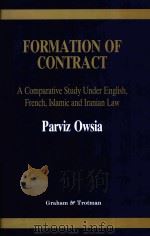《ANTI DUMPING UNDER THE WTO:A COMPARATIVE REVIEW》
| 作者 | KEITH STEELE 编者 |
|---|---|
| 出版 | KLUWER LAW INTERNATIONAL |
| 参考页数 | 279 |
| 出版时间 | 1996(求助前请核对) 目录预览 |
| ISBN号 | 1853330965 — 求助条款 |
| PDF编号 | 813698258(仅供预览,未存储实际文件) |
| 求助格式 | 扫描PDF(若分多册发行,每次仅能受理1册) |
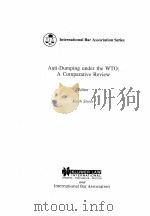
1.An Introductory OverviewKeith Steele, Freehill Hollingdale & Page (Sydney)1
1.Procedures4
2.Substance4
AppendixAgreement on Implementation of Article VI of the General Agreement on Tariffs and Trade 19947
2.AustraliaDaniel Moulis, Freehill Hollingdale & Page (Canberra)35
1.Legislative Scheme35
2.Regulatory Practice and Administration36
3.Practice and Procedure37
3.1 An Outline of the Process of Investigation37
3.2 Standing42
3.3 Evidentiary Matters43
3.4 Representation, Submissions and Hearings46
4.Substantive Rules47
4.1 Local Content and Industry Definitions47
4.2 Like Goods49
4.3 Origin Rules49
4.4 Normal Value Determination49
4.5 Export Price Determination55
4.6 Due Allowances56
4.7 Dumping Analysis57
4.8 Material Injury Determination58
4.9 Causation and Threat59
4.10 Cumulation61
4.11 Circumvention62
5.Duty Imposition63
5.1 Provisional Measures63
5.2 Final Measures64
5.3 Price Undertakings64
5.4 Non-injurious Prices65
5.5 Duration65
6.Review65
6.1 Administrative65
6.2 Judicial66
7.Country Usage Profile66
7.1 Australian Anti-dumping Statistics66
7.2 Products Currently Subject to Dumping Duties67
7.3 Current Trends and Looking Ahead69
3.CanadaRonald C.Cheng, Osler, Hoskin & Harcourt (Ottawa)73
Introduction73
1.Overview of Canadian Trade Remedies Legislation (Scheme and Administration)75
2.Practice and Procedure76
2.1 Initiation of Investigation into Dumping76
2.2 Conduct of the Investigation into Dumping or Subsidy81
2.3 Application of Provisional Measures84
2.4 Price Undertakings85
2.5 Determination of Injury87
2.6 Cumulation91
3.Public Interest Submissions91
4.Final Duties92
4.1 Imposition, Payment and Refund of Duties92
4.2 New Exporters92
5.Circumvention Provisions93
6.Duration and Review of Duties93
7.Judicial Review and Review under the NAFTA94
8.Conclusion94
4.The European UnionFrank Montag and Andre Fiebig, Deringer Tessin Herrmann & Sedemund (Brussels)97
1.Introduction97
2.Administration of the New Rules98
3.Practice and Procedure99
3.1 Initiation of Proceedings99
3.2 Evidence100
3.3 Interested Parties102
3.4 Time Limits103
3.5 Termination of Proceedings103
4.Substantive Rules104
4.1 Determination of Dumping105
4.2 Determination of Injury111
5.The Imposition of Duties114
5.1 Provisional Measures114
5.2 Definitive Duties115
5.3 Community Interests115
5.4 Anti-Circumvention Rules116
6.Reviews117
6.1 Administrative Review117
6.2 Judicial Review118
7.Evaluation119
5.JapanShintaro Hagiwara, Shiba International Law Offices (Tokyo)121
1.Legislative Scheme121
1.1 Previous Japanese Anti-dumping Laws121
1.2 Amendments to Implement the New Anti-dumping Code121
2.Regulatory Practice and Administration122
3.Practice and Procedure122
3.1 Application for Anti-dumping Duties122
3.2 Commencing and Notifying Investigations123
3.3 Time Limits123
3.4 Questionnaires and Verifications123
3.5 Submissions of Questionnaire Responses124
3.6 Preliminary Findings-Form, Content and Standard of Satisfaction124
3.7 Hearings-Nature and Format124
3.8 Confidentiality125
3.9 Representation and Evidence125
3.10 Final Determination125
4.Substantive Rules126
4.1 Local Industry126
4.2 Like Products127
4.3 Normal Value Determination127
4.4 Export Price129
4.5 Due Adjustments and Allowances129
4.6 Dumping Analysis130
4.7 Material Injury Determination130
4.8 Causation130
4.9 Cumulation130
4.10 Circumvention131
5.Duty Imposition131
5.1 Provisional Measures131
5.2 Final Duties131
5.3 Definitive and Provisional Measures-Points in Common132
6.Review133
6.1 Administrative Review under the Japanese Anti-dumping Law133
6.2 Judicial Review133
7.Country Usage Profile134
6.KoreaDoo Woo Seo, Bae, Kim & Lee (Seoul)135
1.Introduction135
2.Basic Principle and the Competent Authorities136
3.Substantive Rules137
3.1 Dumping137
3.2 Material Injury139
4.Procedural Aspects142
4.1 Initiation of Proceedings142
4.2 Preliminary Investigations143
4.3 Provisional Measures143
4.4 Final Investigations144
4.5 Undertaking144
4.6 Withdrawal of the Petition146
4.7 Collection of, and Access to, Information146
4.8 Imposition of Anti-dumping Duties147
4.9 Administrative Review150
4.10 Sunset Provision151
4.11 Judicial Review151
4.12 Others151
5.Concluding Remarks151
7.MexicoErnesto Duhne Backhauss, Santamarina y Steta (Mexico City)155
1.Legislative Scheme155
2.Regulatory Practice and Administration155
3.Practice and Procedure156
3.1 The Investigation156
3.2 De minimis161
3.3 Final Determination162
3.4 Circumvention162
4.Substantive Rules163
4.1 Local Industry163
4.2 Dumping Determination164
4.3 Material Injury Determination166
4.4 Cumulation168
5.Duty Imposition169
5.1 Classification of Anti-dumping Duties169
5.2 The Sunset Period169
6.Review170
6.1 Procedure170
7.Country Usage Profile171
8.A NAFTA PerspectivePeter A.Magnus, Smith Lyons (Ottawa)173
1.Introduction173
2.Dispute Resolution under the New GATT Anti-Dumping Code174
2.1 The Anti-Dumping Code174
2.2 WTO Dispute Settlement175
3.Dispute Settlement under the NAFTA176
3.1 NAFTA Regime of Binational Panel Reviews of Dumping Determinations177
3.2 Experience to Date with the Binational Panel Review Process178
3.3 Lessons from the Canada/US Softwood Lumber Dispute180
4.Alternatives to Anti-dumping183
5.Conclusion184
9.New ZealandRobert Fardell, Russell McVeagh McKenzie Bartleet & Co (Auckland)185
1.Legislative Scheme185
1.1 Statutory Regime for Dumping-Summary185
1.2 Temporary Safeguard Authorities Act 1987-Summary186
2.Regulatory Practice and Administration187
3.Practice and Procedure188
3.1 The Anti-Dumping Code and the Uruguay Round188
3.2 Filing of Complaint188
3.3 General Comments on the Content of a Dumping/Countervailing Complaint190
3.4 Notification191
3.5 Preliminary Findings192
3.6 Hearings and Evidence192
3.7 Confidentiality194
3.8 Final Determination194
4.Substantive Rules195
4.1 Local Industry195
4.2 Like Goods195
4.3 Imported Goods-Origin Rules195
4.4 Normal Value Determination197
4.5 Export Price198
4.6 Dumping Analysis198
4.7 Material Injury199
4.8 Causation200
4.9 Cumulation202
4.10 Circumvention202
5.Duty Imposition204
5.1 Provisional Measures204
5.2 Final Duties204
6.Review205
7.Country Usage Profile206
7.1 History of New Zealand's Dumping Legislation206
7.2 Use of Anti-dumping Laws in the Past207
7.3 Government Attitude to Dumping210
7.4 Factors Relevant to Continuing Usage of Anti-dumping Action210
10.South AfricaLeora Blumberg, Webber Wentzel Bowens (Johannesburg)213
1.Introduction and Legislative Scheme213
2.Regulatory Practice and Administration214
3.Practice and Procedure216
4.Substantive Rules220
5.Duty Imposition223
6.Review of Anti-dumping Duties225
7.Country Usage Profile226
8.Conclusion226
11.TaiwanSui-Yu Wu, Perkins Coie (Taipei)227
1.Is Taiwan an "Outcast" of the Code?227
2.An Overview of Taiwan's Anti-dumping Regime231
2.1 The Complaint232
2.2 Evaluation of Complaint234
2.3 Investigation235
2.4 Normal Value240
2.5 Export Price244
2.6 Comparison between Normal Value and Export Price245
2.7 Injury Determination245
2.8 The MOF's Findings246
2.9 Price Undertaking247
3.A Higher Horizon-the New Code248
3.1 The 5% Rule on the Viability of Domestic Sales248
3.2 Constructed Value249
3.3 Sales to Third Country249
3.4 Fair Comparison249
3.5 Rule of Cumulation250
3.6 Domestic Industry250
3.7 De Minimis Dumping Margin and Import Volume251
3.8 Timely Disclosure251
3.9 Sampling251
3.10 Provisional Measures251
3.11 Price Undertakings252
3.12 Definitive Duties252
3.13 Review253
3.14 Sunset Clause253
3.15 Disclosure254
12.The United StatesN David Palmeter, Graham & James (Washington, D.C.)261
1.Legislative Scheme261
2.Regulatory Practice and Administration262
3.Practice and Procedure262
3.1 Applying for Anti-dumping Duties262
3.2 Screening Applications by Authorities262
3.3 Commencing and Notifying Investigations263
3.4 Time Limits264
3.5 Questionnaires and Verification264
3.6 Submissions266
3.7 Preliminary Findings266
3.8 Hearings266
3.9 Transparency267
3.10 Representation267
3.11 Evidence268
3.12 Final Determinations268
4.Substantive Rules268
4.1 Domestic Industry268
4.2 Like Product268
4.3 Imported Goods-Origin Rules269
4.4 Normal Value Determination269
4.5 Export Price270
4.6 Due Adjustments and Allowances270
4.7 Dumping Analysis271
4.8 Material Injury Determination271
4.9 Circumvention273
5.Duty Imposition274
5.1 Provisional Measures274
5.2 Final Duties274
6.Review275
6.1 Administrative275
6.2 Judicial277
7.Country Usage Profile277
7.1 Extent of Use277
7.2 Government Attitude Toward Dumping Cases278
7.3 Factors Encouraging Use of the Anti-dumping Law278
1996《ANTI DUMPING UNDER THE WTO:A COMPARATIVE REVIEW》由于是年代较久的资料都绝版了,几乎不可能购买到实物。如果大家为了学习确实需要,可向博主求助其电子版PDF文件(由KEITH STEELE 1996 KLUWER LAW INTERNATIONAL 出版的版本) 。对合法合规的求助,我会当即受理并将下载地址发送给你。
高度相关资料
-
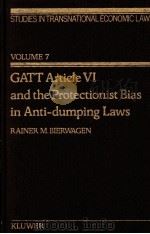
- GATT ARTICLE VI AND THE PROTECTIONIST BIAS IN ANTI DUMPING LAWS
- 1990 RAINER M. BIERWAGEN
-
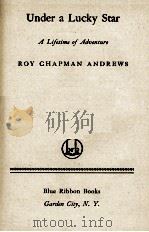
- UNDER A LUCKY STAR
- 1943 BLUE RIBBON BOOKS
-
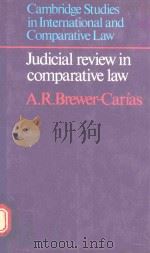
- Judicial review in comparative law
- 1989 Cambridge university press
-

- UNDER A GLASS BELL
- 1944 PENGUIN BOOKS
-
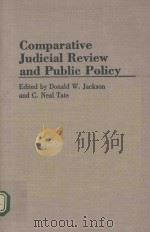
- COMPARATIVE JUDICIAL REVIEW AND PUBLIC POLICY
- 1992 GREENWOOD PRESS
-

- The vanaspati industry a historical review
- 1985 Popular prakashan
-
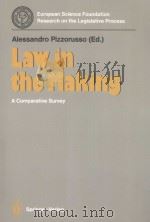
- LAW IN THE MAKING A COMPARATIVE SURVEY
- 1988 SPRINGER-VERLAG BERLIN HEIDELBERG
-
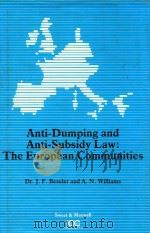
- ANTI-DUMPING AND ANTI-SUBSIDY LAW THE EUROPEAN COMMUNITIES
- 1986 SWEET & MAXWELL
-
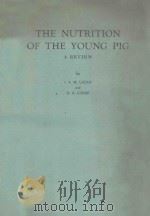
- THE NUTRITION OF THE YOUNG PIG A REVIEW
- 1961 COMMONWEALTH AGRICULTURAL BUREAUX
-
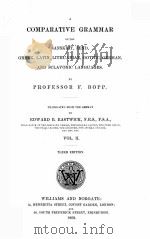
- A COMPARATIVE GRAMMAR
- 1862 WILLIAMS AND NORGATE
-
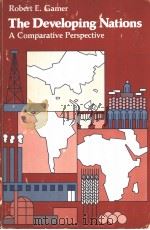
- THE DEVELOPING NATIONS A COMPARATIVE PERSPECTIVE SECOND EDITION
- 1988 WM.C..BROWN PUBLISHERS
-
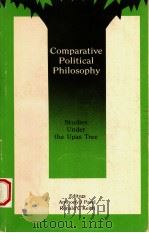
- COMPARATIVE POLITICAL PHILOSOPHY:STUDIES UNDER THE UPAS TREE
- 1992 SAGE PUBLICATIONS
提示:百度云已更名为百度网盘(百度盘),天翼云盘、微盘下载地址……暂未提供。➥ PDF文字可复制化或转WORD


